Developers of wiring products are constantly expanding their functionality, which is explained by the increased requirements for these devices. This trend is confirmed by a triple or three-key switch. Before purchasing and connecting it, it is important to understand the design of the product, as well as the features of installation within the room.
Purpose, design features and advantages
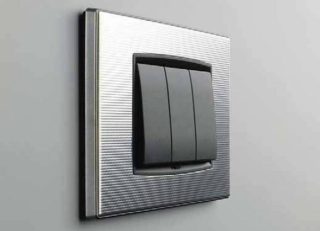
At first glance, this type of switch does not differ from typical devices with one or two keys. In the design of the device, three buttons located end-to-end are distinguishable, combined in one housing. Its main difference from the simplest switches is the ability to switch 3 groups of lighting devices at once from one access point. Switches with three separate buttons are usually installed in rooms with complex configurations:
- combined plumbing units;
- passage corridors of considerable length;
- living rooms combined with kitchen spaces.
In addition, 3-key switches are often used to control chandeliers with multiple arms.
In combined luminaires, they are used to turn on the bulbs in stages, in which first one of them lights up, and then the other two.
The design of the three-button switches is extremely simple. The structure includes three built-in mechanisms with keys fixed on them and a frame of the case, on which the executive part with terminals for connecting wires is located.
The advantages of modern 3-button switches include:
- profitability - instead of three devices, one is used;
- reducing the cost of assembly operations;
- the possibility of combined light control.
The simplicity of the installation of the device for three keys is explained by the reduction in the cost of preparing one seat and for laying the cable to it.
The main types of switching devices
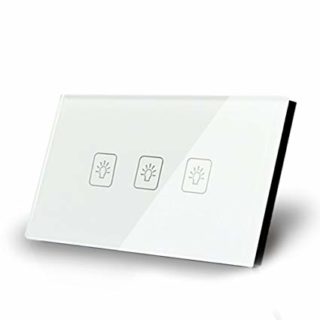
According to the type of switching mechanism, triple switches are divided into ordinary keypads and touch devices. The first ones are triggered when one of the keys is pressed, and the second ones are triggered by touching the touch panel at a certain point. Some models of devices are equipped with a device for smooth dimming until the light is completely turned off (dimmers).
There are three types of triple switches, depending on the mounting method:
- for outdoor installation;
- for hidden placement in a wall niche;
- combined products combined with an outlet.
The installation of a combined 3-key switch is justified in cases where open wiring is provided in the room. Difficulties with the installation of this variety lie in the need to connect a separate neutral conductor to the outlet.
There are triple switches in wireless design, which can be installed in any convenient place for use. There are also switching devices equipped with a light bulb or a miniature LED, which make it possible to organize the backlight of the control panel. Their use is advisable in cases where you often have to turn on the lighting in complete darkness.
Criterias of choice

The main criteria for the correct choice of a triple device are:
- the actuation of the switching mechanism should not be accompanied by jamming or jamming;
- the desired product is selected provided that there are no clearly distinguishable defects on its case;
- to install the device in the bathroom, you will need a switch with a high level of protection against moisture.
When examining the purchased products, you should make sure that pressing each of the keys is accompanied by a characteristic click. Its presence is the best confirmation of the serviceability of the mechanism.
Specimens in a waterproof design are equipped with an additional rubber or plastic sheath that protects the interior from water ingress. To facilitate subsequent installation, it is recommended to select a switch whose switching mechanism has screw-type or cage-type terminals.
Connection diagram
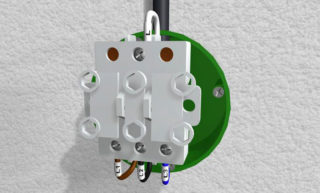
Before connecting the three-button switch, you will need to disassemble it into its component parts. To do this, first remove all three keys with a flat screwdriver and then remove the decorative frame. This opens access to the terminals to which you want to connect the phase wires. Before starting work, it is important to decide on the scheme according to which it is supposed to connect the purchased device. When choosing it, the following options are possible:
- The user expects to turn on three bulbs in the chandelier in stages. It is planned to use a junction box for commutation.
- Direct connection of conductors is assumed to obtain the same effect. The lead goes directly to the contacts of the luminaire.
The connection diagram for each of these cases has its own characteristics.
Connecting three bulbs through a junction box
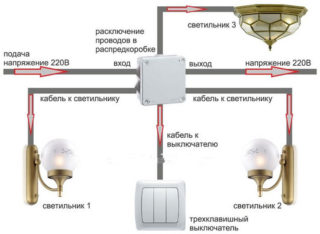
The three phase conductors from the upper terminals of the breaker are routed in a cable duct towards the junction box. In it, they are disconnected with the subsequent design of the branch towards the chandelier. Each of the supply buses is switched in such a way that through it the voltage goes to a separate light bulb. In this case, it will be possible to turn on the lamps in stages - one after the other until maximum illumination is obtained.
This approach is convenient because, if you need to adjust the circuit, it is enough to change the wiring in the box without touching the chandelier itself.
Direct inclusion
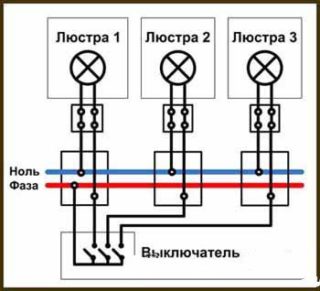
The user saves on consumables and wins in reliability. The basic rule of electricians is: the fewer contacts, the more reliable the circuit.
Three busbars from the switch terminals are laid in the cable duct directly up to the chandelier. Inside the illuminator, they are connected in accordance with the color coding of the conductors. If it is absent, you will have to use a multimeter included in the “Callback” mode. With its help, the conductors are determined, which are connected to the metal base of all three holders: this will be a zero contact. The other three conductors are called to the contact points of the lamp holders: these are phase connections. After marking, each of the wires is connected by means of miniature adapters with the corresponding busbars taken off from the switch. The order in which they are switched does not matter, since the bulbs are usually switched on in no particular order.
Neutral wires are twisted, well soldered and, with the help of an adapter, are connected to the zero bus, which is output through a hole in the ceiling.
Features of mounting combined models
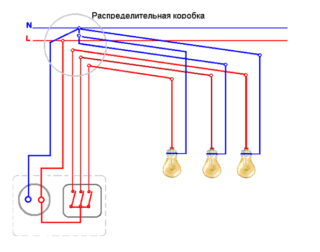
The connection diagram of the combined products differs from the options already considered.Its feature is the need for a zero bus connection, laid from the junction box to the corresponding socket terminal. Outwardly, it looks as if two cables extend from the combined device: one of them leads from the junction box to "zero", and the second leads to three phase conductors.
To obtain the expected effect from a three-button switch, the performer must adhere to the rules for connecting it. Only in this case it is possible to realize all the possibilities of the switching device.








